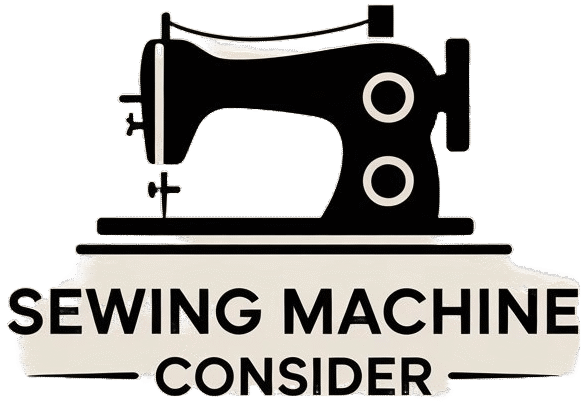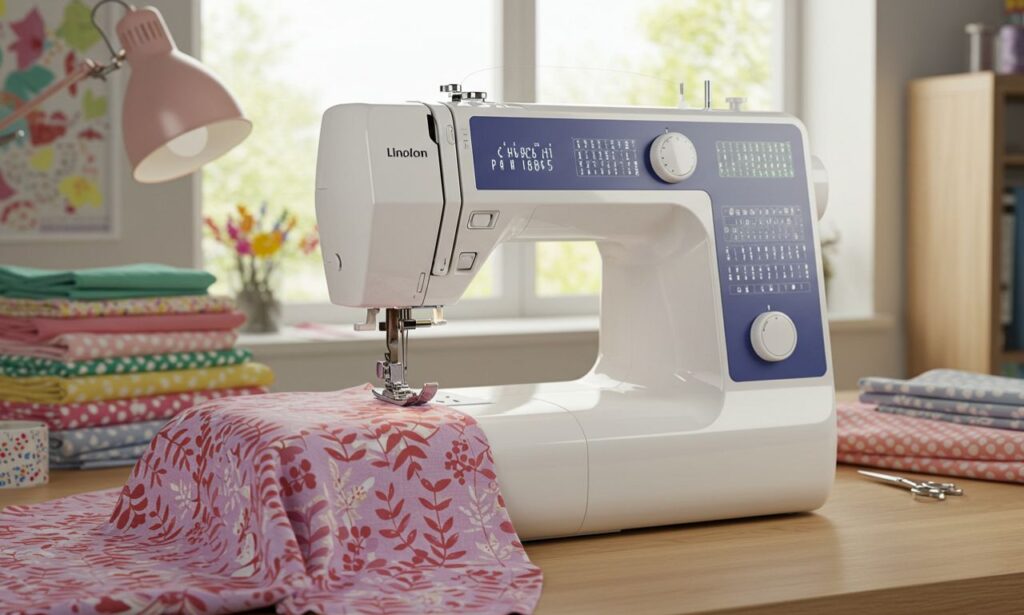In the world of creative arts and fashion, technology continues to transform traditional craftsmanship. One of the finest examples of this evolution is the sewing and embroidery machine — a modern tool that combines precision engineering with artistic expression. Whether you are a home hobbyist, a professional tailor, or an aspiring designer, this machine opens a world of creativity and productivity.
In this article, we’ll explore everything about the sewing and embroidery machine—from its history and key features to expert buying tips, maintenance advice, and how it has redefined modern fabric artistry.
Sewing and Embroidery Machine: A Modern Fusion of Craft and Technology
A sewing and embroidery machine is a versatile tool that performs two main functions—sewing and decorative embroidery. Unlike a traditional sewing machine designed purely for stitching fabrics, this hybrid model integrates computerized embroidery functions, enabling users to stitch intricate designs, patterns, and lettering automatically.
These machines have revolutionized how garments and decor are made. With built-in digital interfaces, users can upload custom designs, adjust thread tension automatically, and even connect via Wi-Fi to download new patterns.
History and Evolution of Sewing and Embroidery Machines
The sewing machine’s origins trace back to the early 19th century, with pioneers like Elias Howe and Isaac Singer laying the foundation. However, embroidery—once entirely done by hand—did not join forces with sewing technology until the late 20th century.
Early embroidery machines were large and industrial, operated by specialists. As computing technology advanced, household versions became possible. By the 2000s, brands like Brother, Janome, and Bernina introduced computerized sewing and embroidery machines, allowing even beginners to create professional-grade designs at home.
Today’s machines feature touchscreen panels, USB design transfer, automatic threaders, and thousands of built-in stitches, merging tradition with innovation.
How a Sewing and Embroidery Machine Works
A sewing and embroidery machine uses a needle, bobbin, and thread, much like a standard sewing unit, but adds electronic components to control movement and patterns.
-
Sewing Mode: Used for basic stitching, hemming, and garment construction.
-
Embroidery Mode: Activated when the hoop is attached, enabling the machine to follow digital patterns precisely.
Computerized software controls the movement of the needle over the fabric, guiding it through intricate loops, shapes, and color changes. Many models allow importing patterns via USB or design apps, offering endless customization.
Key Features of Modern Sewing and Embroidery Machines
The beauty of a sewing and embroidery machine lies in its versatility and automation. Here are the top features that make it a must-have tool:
1. Touchscreen Interface
A full-color touchscreen simplifies operation, allowing you to select designs, adjust settings, and preview results before stitching.
2. Automatic Needle Threader
This saves time and eye strain by threading the needle automatically with just a lever push.
3. Built-In Embroidery Designs
Most modern machines come preloaded with hundreds of embroidery motifs—florals, alphabets, borders, and monograms.
4. USB Connectivity
Users can import custom designs from their computer or download new patterns online.
5. Multi-Needle Options
Advanced models include several needles for switching thread colors automatically without manual intervention.
6. Adjustable Stitch Settings
The user can fine-tune stitch length, width, and density for perfect results on various fabrics.
7. Large Embroidery Area
A larger hoop area allows for detailed designs without needing to re-hoop frequently.
8. Wi-Fi & App Connectivity
Some premium models connect to design apps, offering real-time editing and project sharing.
Types of Sewing and Embroidery Machines
There are several types of machines to suit different needs and budgets:
Basic Combination Machines
Affordable and user-friendly, these offer simple sewing and limited embroidery features—perfect for beginners.
Computerized Sewing and Embroidery Machines
These feature advanced automation, touchscreen controls, and design editing options for intermediate users.
Professional Multi-Needle Machines
Designed for business use, these include up to 10 needles, large work areas, and high-speed embroidery capabilities.
Portable Compact Machines
Ideal for small spaces, these are lightweight but still capable of basic embroidery and sewing projects.
Top Brands Offering Sewing and Embroidery Machines
Some of the most trusted names in the sewing world have perfected this technology:
-
Brother: Known for affordability, durability, and user-friendly designs.
-
Singer: A pioneer in sewing innovation with a focus on robust engineering.
-
Janome: Offers precision and advanced digital features for professional-grade work.
-
Bernina: High-end Swiss craftsmanship with exceptional accuracy and long-lasting performance.
-
Baby Lock: Popular for quiet operation and creative versatility.
Benefits of Using a Sewing and Embroidery Machine
A sewing and embroidery machine offers both artistic freedom and practical efficiency.
Creative Versatility
From monogramming towels to creating custom clothing, the possibilities are endless.
Professional Results at Home
The precision stitching and computerized patterns rival professional embroidery services.
Time Efficiency
Automatic threading, trimming, and stitching functions speed up projects.
Cost-Effective Crafting
Instead of outsourcing embroidery work, you can personalize fabrics and gifts at home.
Business Opportunities
Crafters can monetize their skills by offering custom embroidery and sewing services.
How to Choose the Right Sewing and Embroidery Machine
Selecting the perfect model requires evaluating features, skill level, and budget.
1. Determine Your Purpose
Are you a hobbyist or a small business owner? Basic machines suffice for personal use, while professionals should consider multi-needle models.
2. Check Embroidery Area Size
Larger areas allow for complex designs without repositioning fabric.
3. Evaluate Built-In Designs
Machines with more built-in options offer better variety for beginners.
4. Look for Design Transfer Options
USB and Wi-Fi connectivity expand creative possibilities.
5. Consider Brand Support
Choose brands that provide tutorials, service centers, and readily available spare parts.
6. Budget Wisely
Balance affordability with feature needs—overpaying for unused features can be wasteful.
Common Mistakes to Avoid
While using a sewing and embroidery machine is rewarding, beginners often make avoidable errors:
-
Ignoring thread tension settings, leading to uneven stitches.
-
Using the wrong stabilizer for embroidery.
-
Neglecting routine cleaning or oiling.
-
Overlooking proper hoop alignment.
-
Skipping practice runs before actual projects.
Avoiding these pitfalls ensures consistent results and longer machine life.
Maintenance Tips for Sewing and Embroidery Machines
Proper care keeps your machine running smoothly for years.
-
Regular Cleaning: Remove lint, dust, and thread buildup using a soft brush.
-
Needle Replacement: Change needles frequently to prevent skipped stitches.
-
Lubrication: Follow manufacturer guidelines for oiling moving parts.
-
Software Updates: Keep firmware updated for new features and bug fixes.
-
Cover When Not in Use: Protect against dust and sunlight damage.
-
Professional Servicing: Schedule annual maintenance from certified technicians.
Creative Projects with a Sewing and Embroidery Machine
Here are some popular ideas to showcase your creativity:
-
Personalized Gifts: Towels, napkins, or pillowcases with embroidered initials.
-
Custom Fashion: Add decorative stitching to dresses, blouses, and jackets.
-
Home Decor: Embroidered curtains, table runners, and cushions.
-
Quilting Projects: Combine patchwork with embroidered accents.
-
Business Branding: Stitch company logos on uniforms or promotional fabric.
The ability to blend embroidery with functional sewing opens unlimited design potential.
Future of Sewing and Embroidery Machines
The future is exciting for fabric artists and crafters. Manufacturers are exploring:
-
AI-Powered Pattern Recognition: Machines that auto-correct stitch errors in real time.
-
Cloud Design Storage: Access designs anywhere via the internet.
-
Voice Commands: Hands-free operation for faster workflow.
-
Eco-Friendly Models: Reduced power consumption and recyclable materials.
These innovations will make creative sewing even more accessible and sustainable.
Conclusion
The sewing and embroidery machine has transformed creative expression in fashion, home decor, and craft industries. Combining traditional sewing precision with modern technology, these machines empower users to craft intricate designs with ease. Whether you are designing your next fashion line or adding a personal touch to a pillowcase, this tool ensures your ideas come to life with color, texture, and precision.
As technology evolves, these machines will only become smarter, faster, and more intuitive—proving that creativity, when paired with innovation, knows no limits.



